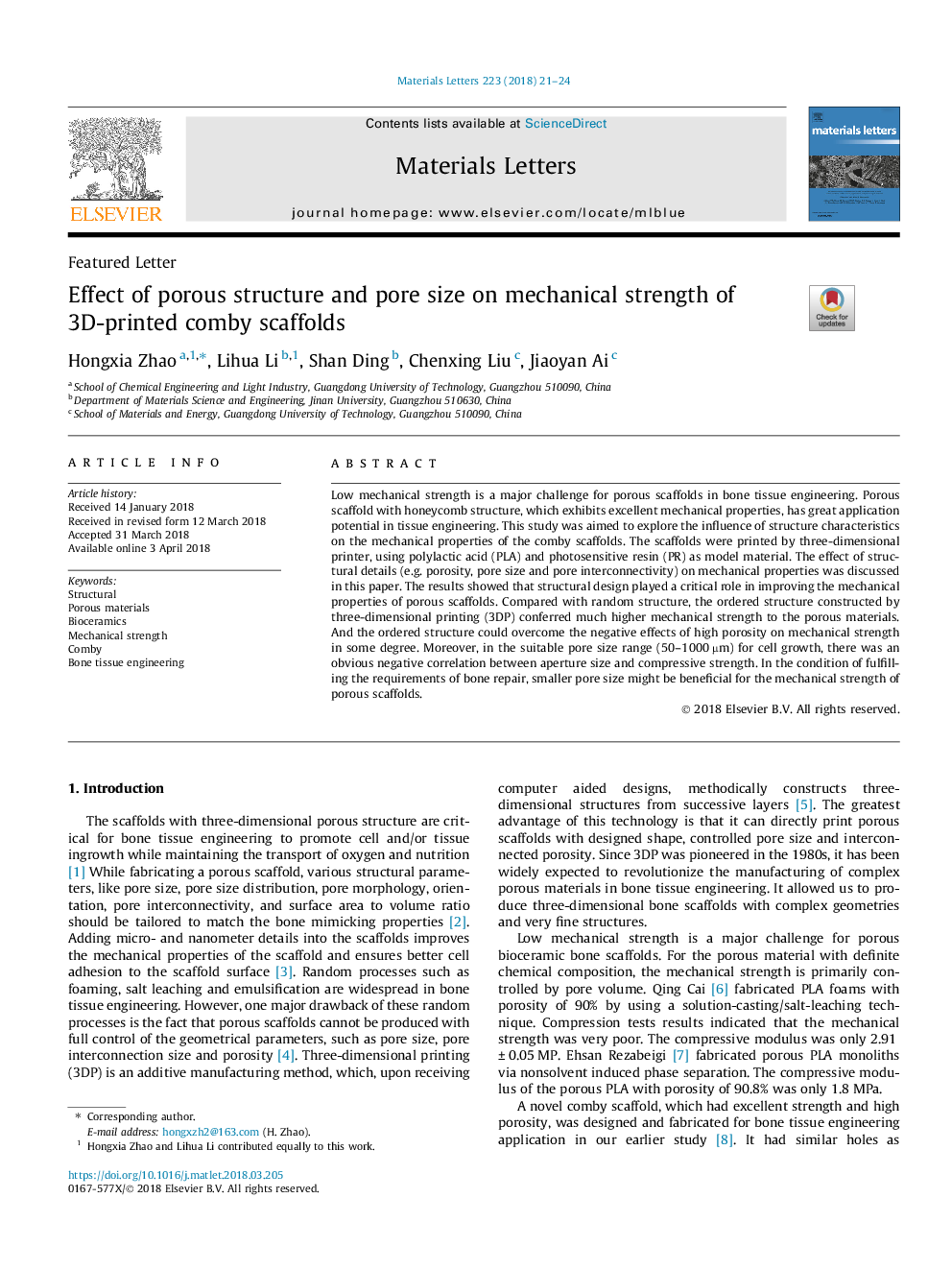| Article ID | Journal | Published Year | Pages | File Type |
|---|---|---|---|---|
| 8012985 | Materials Letters | 2018 | 4 Pages |
Abstract
Low mechanical strength is a major challenge for porous scaffolds in bone tissue engineering. Porous scaffold with honeycomb structure, which exhibits excellent mechanical properties, has great application potential in tissue engineering. This study was aimed to explore the influence of structure characteristics on the mechanical properties of the comby scaffolds. The scaffolds were printed by three-dimensional printer, using polylactic acid (PLA) and photosensitive resin (PR) as model material. The effect of structural details (e.g. porosity, pore size and pore interconnectivity) on mechanical properties was discussed in this paper. The results showed that structural design played a critical role in improving the mechanical properties of porous scaffolds. Compared with random structure, the ordered structure constructed by three-dimensional printing (3DP) conferred much higher mechanical strength to the porous materials. And the ordered structure could overcome the negative effects of high porosity on mechanical strength in some degree. Moreover, in the suitable pore size range (50-1000â¯Âµm) for cell growth, there was an obvious negative correlation between aperture size and compressive strength. In the condition of fulfilling the requirements of bone repair, smaller pore size might be beneficial for the mechanical strength of porous scaffolds.
Related Topics
Physical Sciences and Engineering
Materials Science
Nanotechnology
Authors
Hongxia Zhao, Lihua Li, Shan Ding, Chenxing Liu, Jiaoyan Ai,
